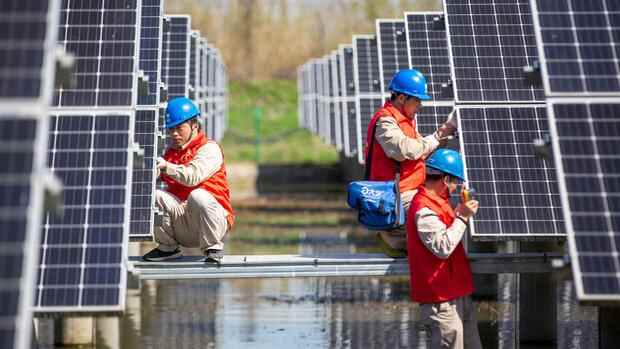In the weekly column we take turns writing about innovation and economic trends in Asia.
(Photo: Klawe Rzeczy)
72 percent of the oil that China consumes comes from abroad – mainly from the Middle East and Russia. And the energy needs of the world’s second largest economy continue to grow. Greater energy security is therefore a major issue for Beijing. The Ukraine war and the struggle of the European countries for their supplies have only strengthened this striving.
Not that China, which is not participating in the sanctions against Moscow, has any political problem with getting oil from Saudi Arabia or Russia. But terminals for liquid gas in the ports can be cut off and gas pipelines shut down. In a geopolitically more fragile world, China also wants to reduce its dependencies. This is shown by several plans that the government has just presented.
For example, the five-year plan presented at the end of March set the clear goal of ensuring “national energy security” by building a new energy system. Technologies such as new storage solutions and green hydrogen at sharply falling prices play a central role in this. Because only with them can China manage in the long term to make the further increase in consumption more climate-friendly and with a higher degree of self-sufficiency.
China is already the largest producer and consumer of hydrogen. In a first national development plan for the industry, also presented at the end of March, Beijing has set itself the goal of producing at least 100,000 tons of green hydrogen annually from 2025 – i.e. the type of hydrogen in which the electricity for electrolysis comes from renewable energy sources.
Top jobs of the day
Find the best jobs now and
be notified by email.
For this purpose, a largely domestic supply chain is to be set up, from the manufacture of the electrolyzers to the supply of energy. Here, too, the goal of self-sufficiency is clearly recognizable.
Use of storage technologies is encouraged
Wind and solar power plants are to be massively expanded in the Chinese deserts in order to supply other regions of the country with them. The world’s largest solar module manufacturer Longi Green Energy Technology expects a massive increase in demand and wants to triple the production of electrolysers. China is already the market leader in the solar industry, in lithium-ion batteries and in wind power.
The state leadership wants to promote the widespread use of storage technologies for both hydrogen and other types of energy. And the costs should drop drastically. According to the five-year energy plan, electrochemical energy storage systems should cost 30 percent less by 2025 than they currently do. 30 gigawatts of storage capacity are to be created in this way.
Wind and solar systems are to be massively expanded in China.
(Photo: imago images/VCG)
However, that is only just under four percent of the 800 gigawatts of additional generation capacity planned for the same period in China. By then, renewable energies should cover 20 percent of energy consumption. Five years later, in 2030, it should be 25 percent.
However, China’s energy world is nowhere near as green as it may sound. For the Beijing leadership, it is time to take countermeasures, because carbon dioxide emissions have risen significantly in the past two years.
>> Be there: At the Handelsblatt Hydrogen Summit, we discuss how the market ramp-up can succeed
Nevertheless, the planned new tour de force for renewable energies should further reduce costs. Example of green hydrogen: The “China Hydrogen Alliance” calculates that, including all capital investments, it will still cost the equivalent of four dollars in 2025 to produce one kilogram of the energy source. Five years later it should only cost 2.40 dollars. Thus, China’s pursuit of energy security through technology will also have an impact on global energy production.
In our Asia Techonomics column, Nicole Bastian, Dana Heide, Sabine Gusbeth, Martin Kölling and Mathias Peer take turns writing about innovation and economic trends in the most dynamic region in the world.
More: A city is shutting down – China’s energy problems are our supply chain concerns.
